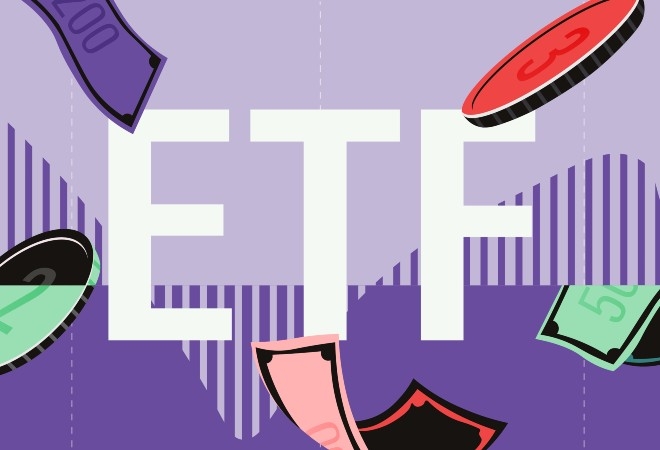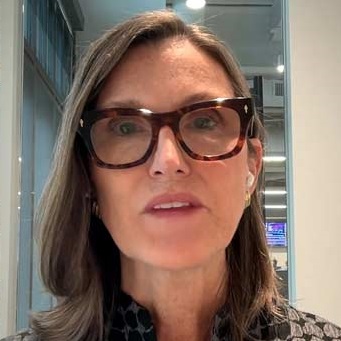
As part of our thematic investing week, we spoke to three fund managers about how to manage the hype cycle that tends to follow hot themes. Managers at Schroders, Janus Henderson and Baillie Giffford share their experiences.
Ever been on a rollercoaster ride? You feel a wave of suspense as you are taken slowly up to the top of the track. The wheels of your cart then pause for a moment.
Your cart then tips ever so slightly leading you to a cascading fall, hands flown into the air, with your mouth wide open screaming in a mixture of fear and excitement.
Thematic investments offer a similar ride.
With soaring highs and deep lows, fund managers allocating to sectors to tackle the most pressing issues of our time from water scarcity to climate change, initially enthuse investors.
But the hype cycle eventually ends leads to disappointment. So, how do professional thematic investors endure the ups and downs?
Are Stocks Post Growth or Just Normalising?
Alex Monk, portfolio manager of the Schroder ISF Global Energy Transition Fund, is facing a challenging period, with the fund recording negative total returns over YTD (-5.9%), 1 year (-19.42%), annualised two years (-8.11), and three years (-6.57%) respectively.
Despite current forces hindering the fund’s returns Monk is confident that investing in the transition to renewable energy will guarantee investors growth in the long term. (My colleague Valerio Baselli has looked at the sector in detail.)
He also believes that current lows reflect the sector returning to normalised levels after the exuberance consumers experienced in the pandemic.
“Everybody was stuck at home spending on goods rather than services, so people were buying EVs, interest rates were super low. That made funding a lot of these purchases' extra easy. And there was short term policy support and subsidies for some of these technologies,” he tells Morningstar.
“So, what you ended up with was a situation where the adoption of some of the consumer parts of the energy transition skyrocketed well above the normalised structural growth trend.”
Market Exuberance for Renewables
Soaring demand was also accelerated by Russia’s invasion of Ukraine which brought energy security to the forefront of geopolitics increasing the demand for green energy alternatives.
“What we then saw at the end of 2022 was some of those positive cyclical forces starting to ease off a little bit. But all the market sees are downward revisions to earnings, and it looks like demand in some of these areas is falling aggressively and earnings are starting to fall.”
“These companies start to be looked at as ex growth, but all you are doing is normalising back to trend after the period of excessive demand to a more normalised level and then the structural forces of adoption will start to take place,” he said.
Yet, Monk remains optimistic arguing that investors should pay close attention to various thematic funds, where valuations of companies are trading well below where they were in 2019 during the height of the market’s exuberance for renewables.
“A lot of these businesses are much bigger, much more cash generative, with healthier balance sheets than they were in 2019. But the valuations are below where they were in 2019. So, on a forward basis, the risk reward is interesting.”
“If you go back to the dot com bubble in 2000 and you look at what happened to PC and mobile sales after the bubble burst. The decline was in the short term but that did not change the broader long term structural shift towards PCs and using mobile phones. What we care about is the long-term structure and that is ultimately where we are going to capture returns.”
Funds Built Around Themes
For Alison Porter, portfolio manager of the Janus Henderson Sustainable Future Technologies Fund, thematic funds often struggle to navigate the hype cycle because they struggle to fulfil their end market theme by finding profitable businesses to invest in.
“You see a lot of funds which are designed around the idea of the end market or simply of looking at a problem. The theme means they often must find 40 to 50 stocks that in some way align with the theme,” Porter tells Morningstar.
“And how we look at managing technology is that we look for not just companies who have these positive end markets but also companies that have a business case.”
For Porter, in a hype cycle, investors can identify a problem or a growth area which leads to substantial capital flows. But often the spaces are competitive, and companies' valuations become unsustainable and later unwind.
Janus Henderson’s Sustainable Future Technology Fund is one of the UK’s best performing thematic funds, reporting a positive return of YTD (10.72%), 1 year (29.40%) and 2 years (12.27%), benefiting from the bull run in the technology sector.
She says that thematic investing is cyclical with lofty heights and disappointing lows almost guaranteed when investing in innovative and growth led sectors.
Healthcare Investing and Technology
However, Julia Angeles, portfolio manager of the Baillie Gifford WW Health Innovation Fund, is sceptical of the idea of cyclicality.
In the case of healthcare, Angeles is targeting businesses that are converging healthcare needs with the development of new technologies. In her view, structural drivers underpinning healthcare have not changed but what has ebbed is the way markets perceive innovation in the space.
“Moderna for example has a very exciting vaccine against cancer, it is called the personalised cancer vaccine, which already has very strong data. So, it is not just hypothesis, it is going to work. The first product is for melanoma, and it does magic for those patients who have no other options.”
“But the market is really struggling to attach any value to the cancer franchise of Moderna because it is still not on the market,” she says.
The healthcare sector came into focus during the coronavirus pandemic, but this led to a distortion in the demand for certain products - and displacement of others. Whilst inflation and higher interest rates made access to capital more restrictive for businesses.
This backdrop contributed to the fund’s spate of losses, with a total return rate of –2.47% (YTD), -15.04% (1 Year), -14.13% (two years annualised), and –15.46% (three years).
Yet, Angeles believes that health care has been mainly hit by the market's perception of the space.
“The value attached to innovation is negligible, almost zero. The market only values what it can see, but it cannot really value anything like the potential of a company. But the key message here that is innovation is on sale in the current environment.”




























